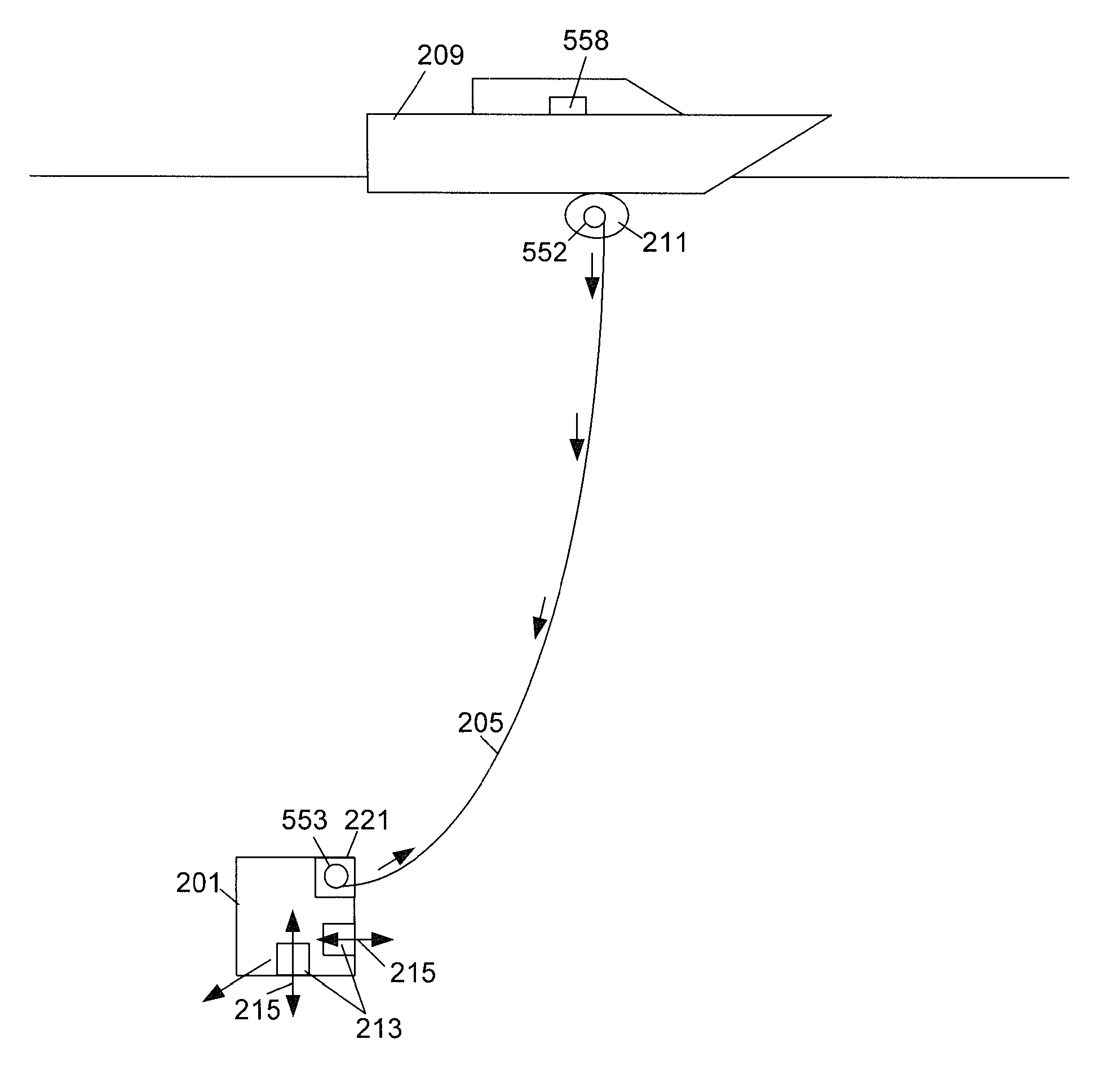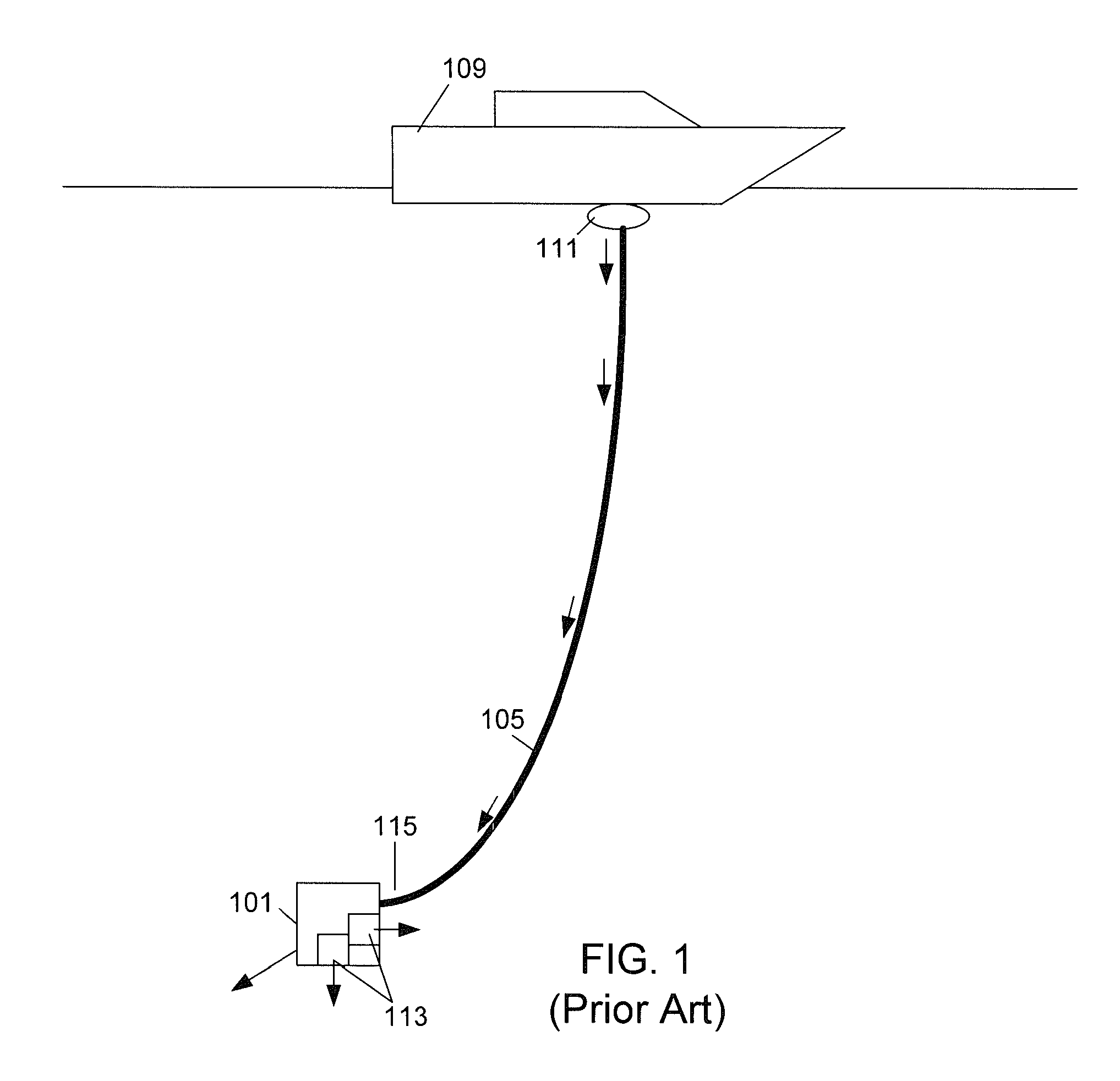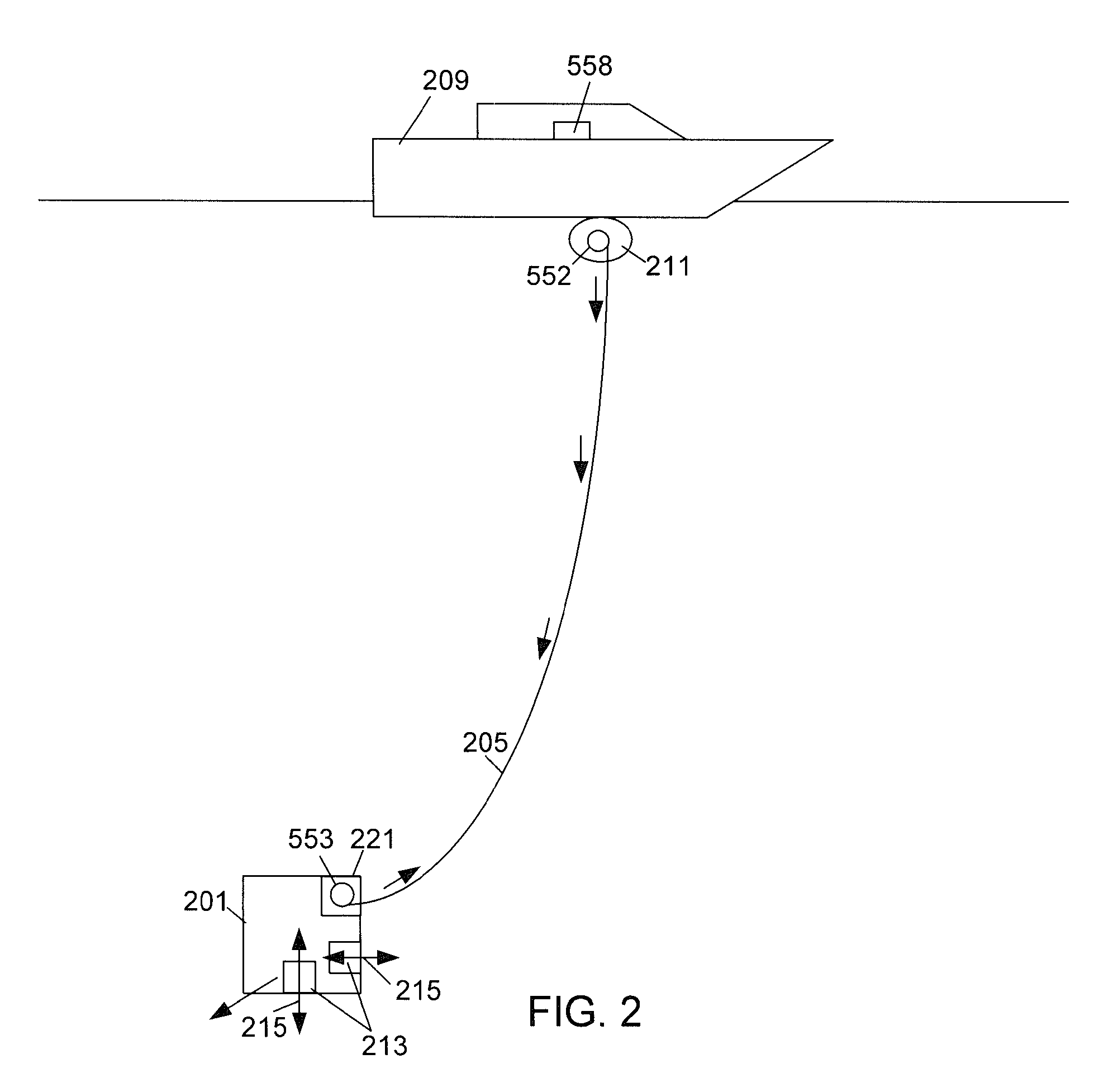Dual mode fiber optic cable system for underwater remotely operated vehicle
a remote-operated vehicle and fiber optic cable technology, applied in special-purpose vessels, instruments, force/torque/work measurement apparatus, etc., can solve problems such as cable failure, and achieve the effects of reducing drag, high strength, and minimizing circumferen
- Summary
- Abstract
- Description
- Claims
- Application Information
AI Technical Summary
Benefits of technology
Problems solved by technology
Method used
Image
Examples
Embodiment Construction
[0015]The present invention is directed towards a system for storing and releasing a cable that extends between an ROV and a support ship from the ROV if the cable tension exceeds a predetermined force to prevent cable failure. This system can be particularly useful for thin cables that include an optical fiber but do not include electrical conductors for powering the ROV. With reference to FIG. 2 a simplified drawing of an ROV 201 is illustrated. The cable 205 can be stored on both a cable storage device 211 on the support vessel 209 as well as in a cable release device 221 on the ROV 201. As the ROV 201 travels away from the support ship 209, the cable 205 is released from the storage device 211. Alternatively, the cable 205 can be stored on the deck of the support ship 209 and can be mechanically or manually released as the ROV 201 travels away from the ship 209.
[0016]During normal operations the cable 205 aboard the ROV 201 can remain in reserve and it may not be used. The ROV 2...
PUM
| Property | Measurement | Unit |
|---|---|---|
| length | aaaaa | aaaaa |
| circumference | aaaaa | aaaaa |
| diameter | aaaaa | aaaaa |
Abstract
Description
Claims
Application Information
 Login to View More
Login to View More - R&D
- Intellectual Property
- Life Sciences
- Materials
- Tech Scout
- Unparalleled Data Quality
- Higher Quality Content
- 60% Fewer Hallucinations
Browse by: Latest US Patents, China's latest patents, Technical Efficacy Thesaurus, Application Domain, Technology Topic, Popular Technical Reports.
© 2025 PatSnap. All rights reserved.Legal|Privacy policy|Modern Slavery Act Transparency Statement|Sitemap|About US| Contact US: help@patsnap.com



